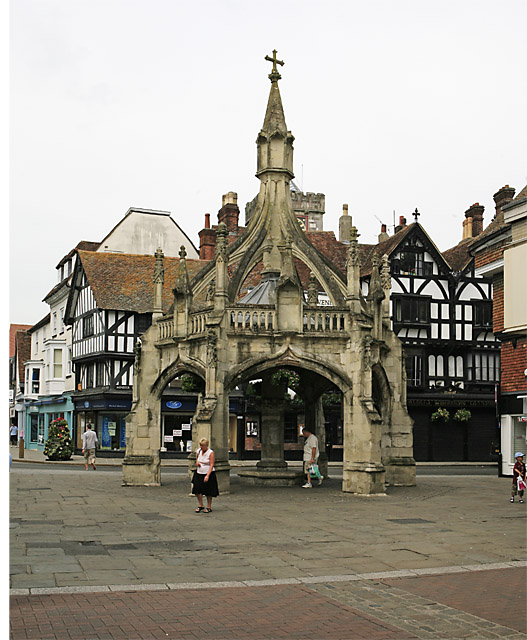The Poultry Cross (Salisbury) on:
[Wikipedia]
[Google]
[Amazon]
 The Poultry Cross is a
The Poultry Cross is a
 The Poultry Cross is a
The Poultry Cross is a market cross
A market cross, or in Scots, a mercat cross, is a structure used to mark a market square in market towns, where historically the right to hold a regular market or fair was granted by the monarch, a bishop or a baron.
History
Market crosse ...
in Salisbury
Salisbury ( ) is a cathedral city in Wiltshire, England with a population of 41,820, at the confluence of the rivers Avon, Nadder and Bourne. The city is approximately from Southampton and from Bath.
Salisbury is in the southeast of Wil ...
, Wiltshire
Wiltshire (; abbreviated Wilts) is a historic and ceremonial county in South West England with an area of . It is landlocked and borders the counties of Dorset to the southwest, Somerset to the west, Hampshire to the southeast, Gloucestershire ...
, England, marking the site of former markets. Constructed in the 14th century and modified in the 18th century it stands at the junction of Silver Street and Minster Street. It has been designated by English Heritage
English Heritage (officially the English Heritage Trust) is a charity that manages over 400 historic monuments, buildings and places. These include prehistoric sites, medieval castles, Roman forts and country houses.
The charity states that i ...
as a Grade I listed
In the United Kingdom, a listed building or listed structure is one that has been placed on one of the four statutory lists maintained by Historic England in England, Historic Environment Scotland in Scotland, in Wales, and the Northern Irel ...
structure.
The Poultry Cross is the only one remaining of four market crosses that once stood in Salisbury. The others were the Cheese Cross in the present Cheesemarket area, Barnard's Cross (livestock) at the junction of Barnard Street and Culver Street and another which designated a market for wool and yarn at the east end of the present Market Place near the War Memorial.
The presence of a market cross on the Poultry Cross site dates to 1307 and the name to about a century later. The present stone structure was built in the late 15th century. The original flying buttresses
The flying buttress (''arc-boutant'', arch buttress) is a specific form of buttress composed of an arch that extends from the upper portion of a wall to a pier of great mass, in order to convey lateral forces to the ground that are necessary to pu ...
were removed in 1711, as can be seen in the painting of 1800 by J. M. W. Turner
Joseph Mallord William Turner (23 April 177519 December 1851), known in his time as William Turner, was an English Romantic painter, printmaker and watercolourist. He is known for his expressive colouring, imaginative landscapes and turbulen ...
; the present buttresses date from 1852–1854, when the upper parts of the cross were rebuilt to the designs of the architect Owen Browne Carter
Owen Browne Carter (1806 – 30 March 1859) was an English architect, based in Winchester, but also had works commissioned from all around the country. He designed several public buildings, such as The Corn Exchange in Winchester, now the Librar ...
.
The present-day site, around the structure, is used as part of Salisbury Market on Tuesdays and Saturdays. However, the actual structure is no longer in use.
References
{{coord, 51.06876, -1.79616, type:landmark_region:GB, format=dms, display=title Buildings and structures in Salisbury Grade I listed buildings in Wiltshire Market crosses in England